You’re sure you’ve tried every advanced strategy possible, but your Facebook ads still aren't driving the results you want. What's the deal?
Most digital marketing professionals assign Facebook advertising failures to one of a few reasons. “Because social media marketing doesn’t work” is one of the most popular. Beyond that, people typically blame on-site factors, like a poor call-to-action (CTA) or landing page design.
Your page design and CTA might be contributing to the problem. However, it’s probably not the biggest problem. In fact, your problem might not be at the bottom of your funnel at all. It’s likely at the top.
You want your pipeline to be full, so brand awareness and top-of-funnel investment will always be important. Despite your best intentions, your conversions will continue to suffer if no one knows who you are.
In this article, we’ll give you the scoop on why underinvesting in Facebook brand awareness will hurt your lead generation—and how fixing it will improve your ROI.
Not to mention, we’ve included 13 secret hacks that will bring your brand awareness Facebook ad campaigns from zeroes to heroes.
- Google Ads and Facebook Ads aren't the same
- What are Facebook brand awareness campaigns for?
- 13 Facebook brand awareness hacks you need to know
- 1. Understand your audience demographics and customer segments
- 2. Discover your audience’s motivations
- 3. Research your persona’s interests
- 4. Get your existing customers to self-select
- 5. Fine-tune your interest audiences sizes
- 6. Go big to be shared wide
- 7. Use the problem, agitate, solution (PAS) strategy
- 8. Use branded content to leverage influencers
- 9. Event sponsorships
- 10. Reach people for less with mobile ads
- 11. Interactive brand awareness with Facebook’s Instant Experience
- 12. Right-column Facebook Ads
- 13. Use America’s favorite word: “Free”
- Ready to build brand awareness campaigns that win?
Get brand new Facebook ad strategies straight to your inbox every week. 23,739 people already are!
Google Ads and Facebook Ads aren't the same
People go to Google to find, research, and buy something specific.
But that’s not how it works on Facebook. People don’t go there to shop, they go there to kill a few minutes, talk with their friends or family, stalk their past classmates, and avoid doing their next report.
It’s during this time that people stumble across ads on Facebook. Something catches their eye and interrupts the scrolling just long enough to grab their attention.
This means that throwing an “Irvine Tax Professional” ad on Facebook will probably tank (unless you’re running a retargeting campaign for those who showed interest in such a service off the platform).
Nobody’s initial intent on Facebook is searching for a tax professional. And the same ad that would work on Google PPC is just too sales-focused on Facebook. On social media, you can't really ask a total stranger to buy your product or service right away. There’s a longer funnel that needs to do its thing.
What are Facebook brand awareness campaigns for?
Your awareness campaigns only have one job:
To generate members for your custom audiences as quickly as possible.
In other words, they don’t necessarily sell. Instead, they lead people into your Facebook marketing funnel. It all starts with a site visit or on-Facebook engagement (such as video views or page likes).
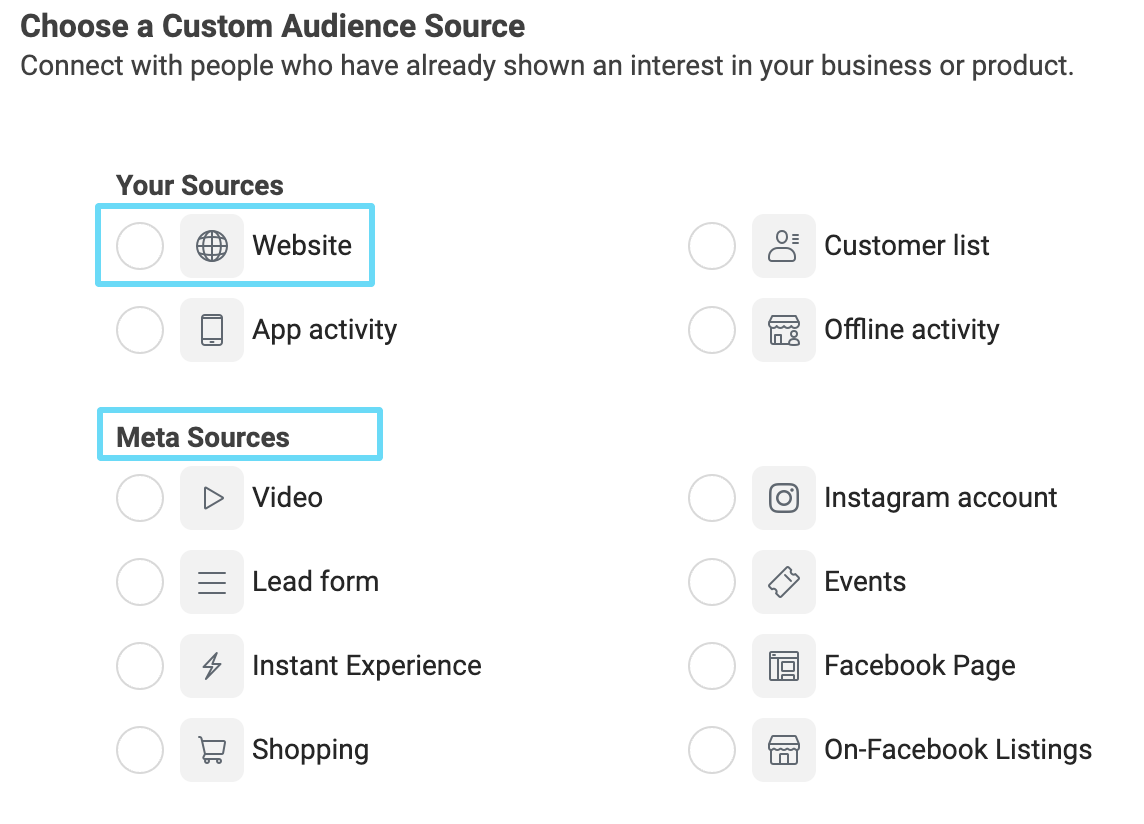
Building your top-of-funnel audiences who have either been to your site or engaged with your business on Facebook or Instagram gives you a huge retargeting advantage down the line.
To build better top-of-funnel prospects that turn into golden bottom-of-funnel opportunities, you’ll need to start with interest-based audiences on Facebook. Not just any interest-based audiences, either–you’ll have to leverage your existing contacts, customers, and databases to get a better idea of who to go after.
Then, once you’ve built up significant top-of-funnel traffic, start creating new custom audiences as fast as possible. To read more about how to do that, check this out.
13 Facebook brand awareness hacks you need to know
Awareness and interest are intrinsically tied together. It’s not just about whether or not someone knows your brand name–it’s about whether or not your brand actually matters to someone.
To build better brand awareness and form a top-of-funnel audience that’s more likely to be invested in your brand and products later on in the funnel, you’ll need our handy tricks in your toolbelt.
We’ll help you prepare and work to build audiences that are both heavily aware and seriously interested, meaning more bottom-of-funnel return on investment for you.
Without further delay…
1. Understand your audience demographics and customer segments
Chances are, you sell different products and services to lots of different people.
That means you have more than just one segment of customers. You need buyer personas to bring each audience member to life.
Fortunately, you can start with the insights on your page that Facebook already provides. Follow the steps below to see customer insights on your Facebook page:
Go to your Facebook (AKA Meta) Ads Manager. Click into your “All Tools” menu and scroll down to “Insights.” Click “Audience.”
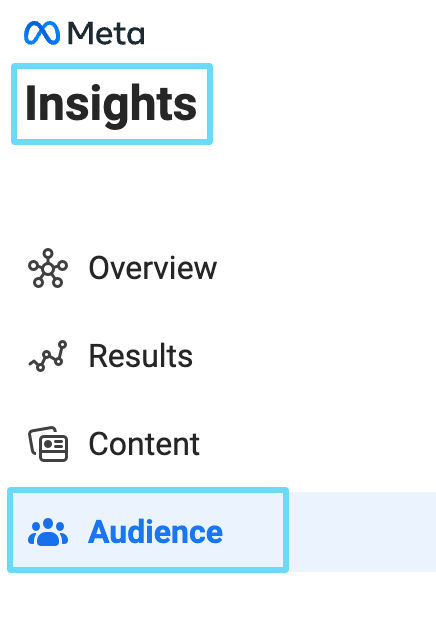
Select the business and/or ad account assets you want to view insights on. If you’re not running ads yet, you’ll want to look at your business asset to see audience data on organic Facebook page traffic.

Have a look at your audience breakdowns. You can see both your current audience and potential audience. Here’s an example of data underneath each segment.
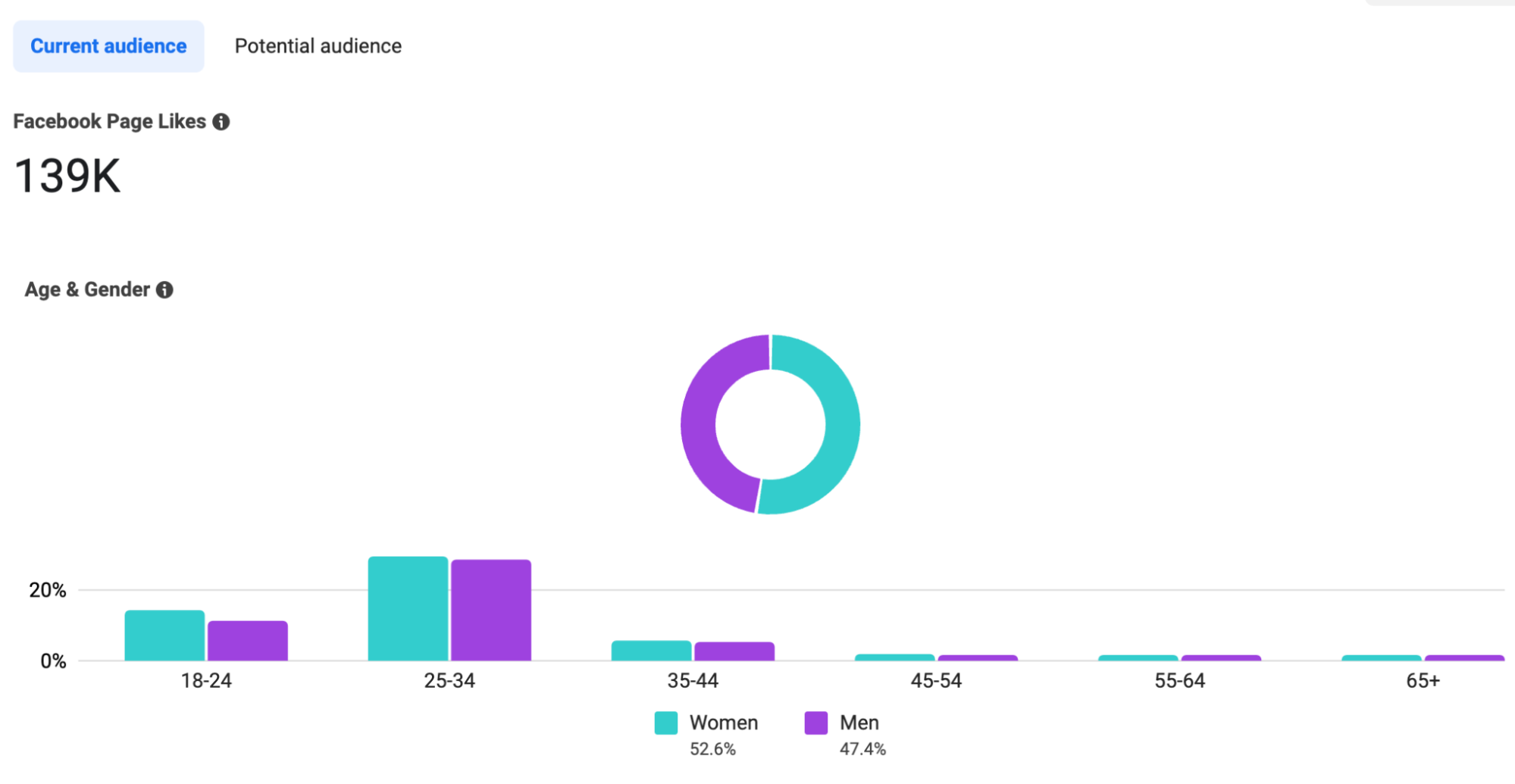
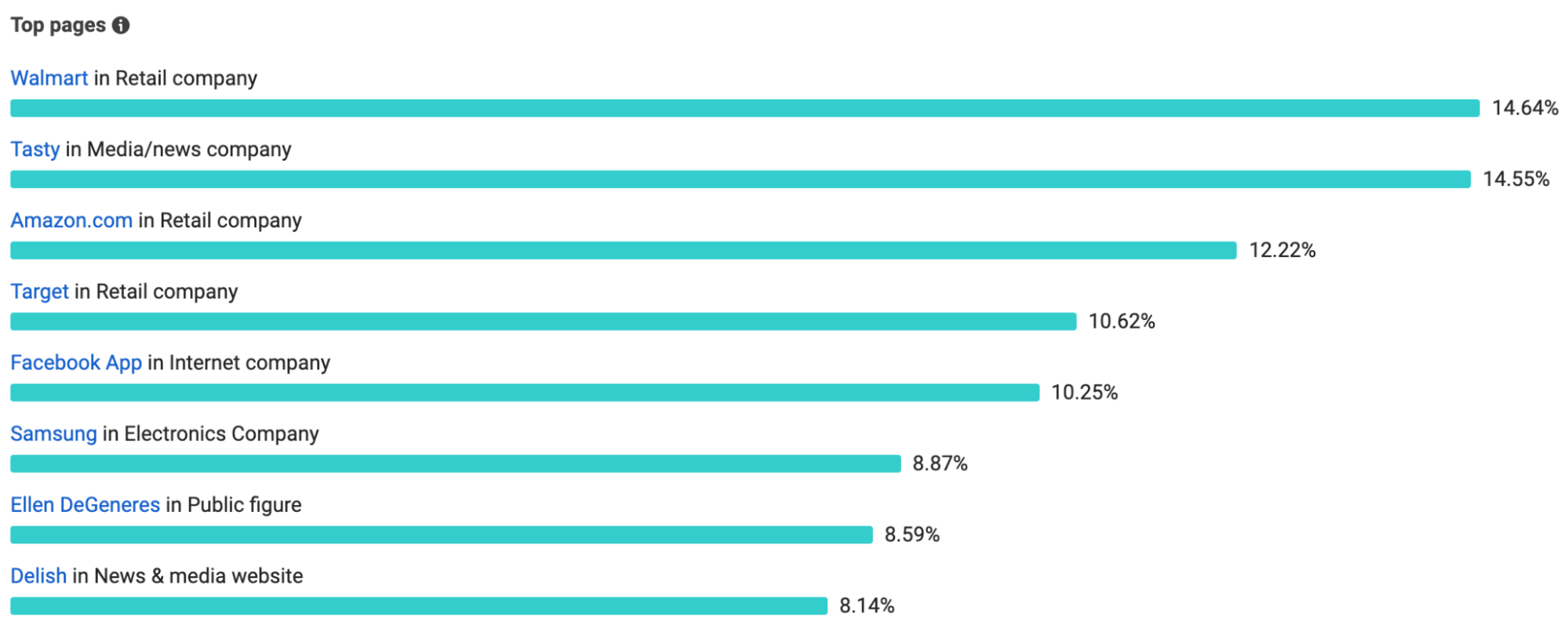
This will give you a quick look at the gender, age range, and locations of your current or potential audiences. You’ll also notice your potential audience, like in our screenshot above, has an added section for top pages liked by that audience. Now, you can already start making smart conclusions about who is or could be interested in your brand.
Google Analytics can also provide demographic data on your existing traffic across channels once you’ve configured the platform to do so.
2. Discover your audience’s motivations
Demographic data is a solid start, but you can’t stop there.
The only way to fully flesh out these customer personas is to understand their motivations. You need to know what their goals are, and what’s keeping them from reaching those.
When you know that level of granular detail, you can accurately sell them the solution to their obstacles.
To do this, you’re going to need additional data points, and the best way to get those is by carrying out real-life conversations.
If you’re thinking, “Now, hold on, I can just ask customers questions to see what they like best?”
The answer is: Yes, you can.
If you’re willing to take this leap of faith, there are Google Surveys. It’s a cost-effective tool you can use to conduct market research across millions of users at between 10 cents and $3 per survey completion.
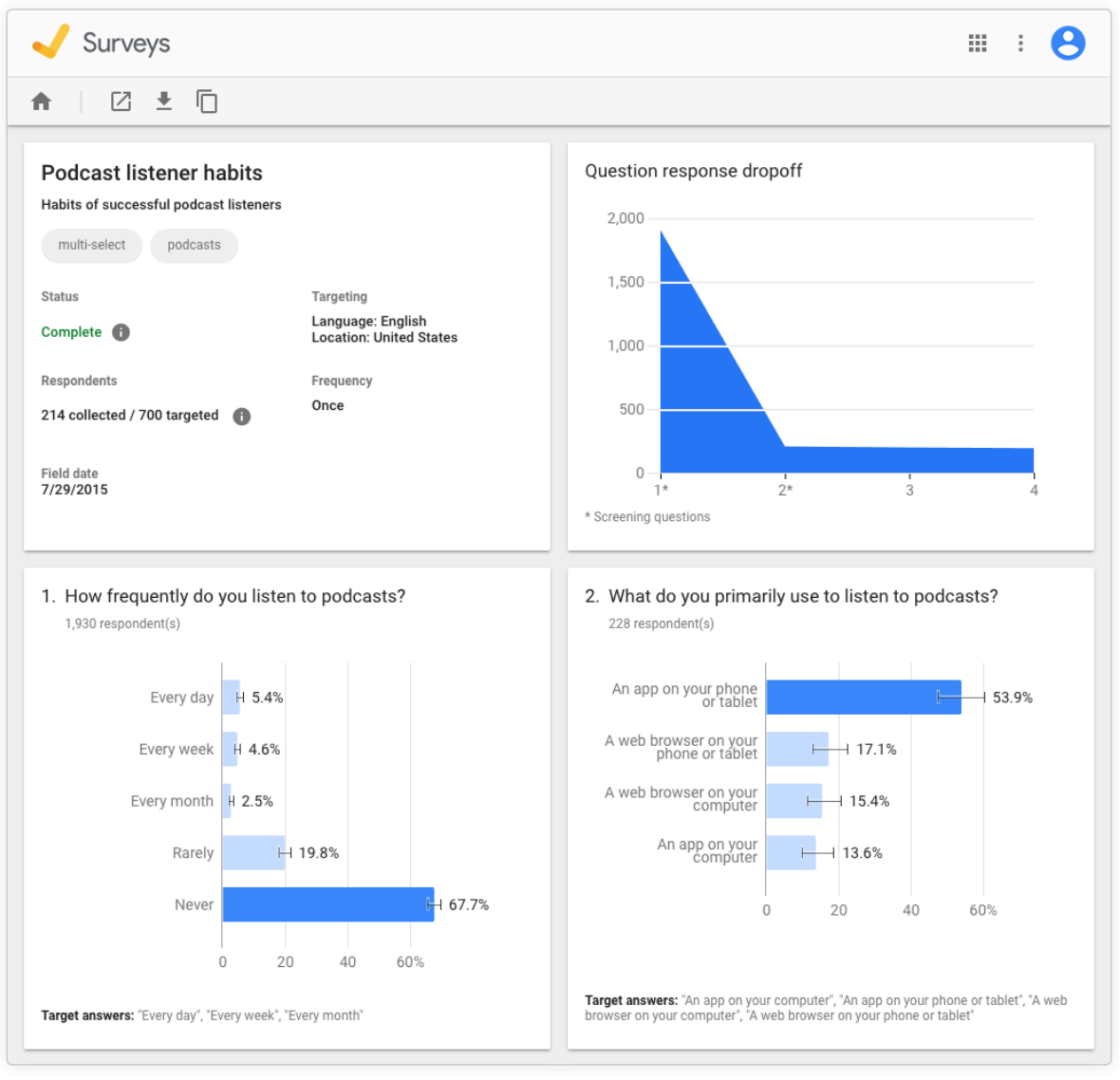
With Google Surveys, you can also require screening questions to only allow specific people to answer.
3. Research your persona’s interests
Now that you have a little background knowledge on each persona, it’s time to start finding out where those people hang out on Facebook.
Facebook’s interest-based ad targeting gives you the ability to target wide-ranging interests, like “gardening.”
But as you can imagine, that’s not always helpful. You might get hundreds of millions of people in your audience when your specific buyer persona is only a tiny fraction of them.
Facebook allows you to shortcut this discrepancy by selecting people interested in other brands, bloggers, and media outlets.
This provides one really major benefit: You can instantly target a specific cross-section of like-minded people that closely align to your buyer persona(s).
But where should you start if you don’t know many brands or media outlets in the space?
Here’s one idea: Go look at who’s already advertising or showing up for top queries related to your products. You can run these searches in Google with big, generic phrases and see who else pops up.
For example, let’s say you want to sell to a crowd of younger homeowners that are also highly interested in gardening. They probably will want to start a garden in their own backyard.
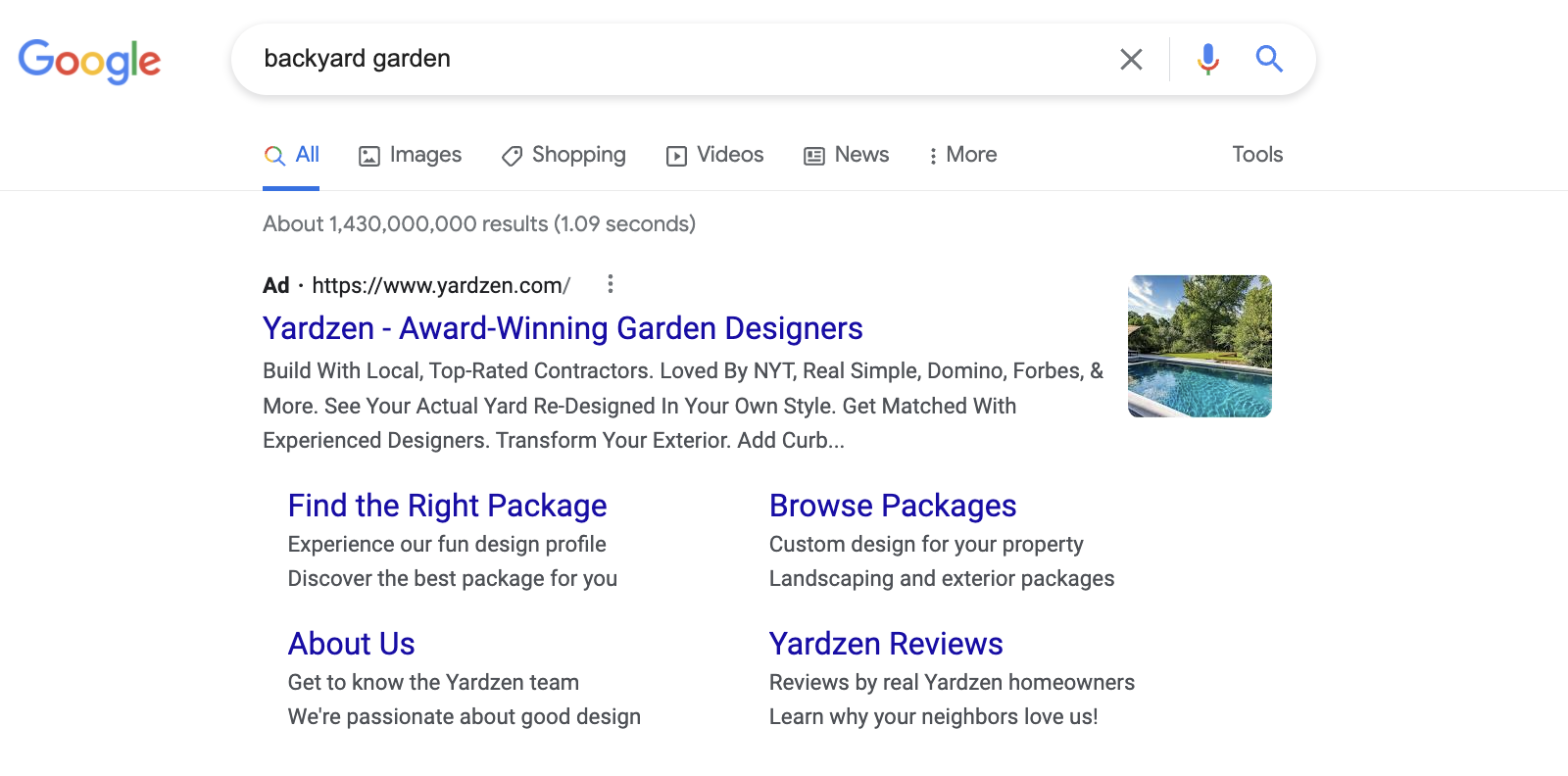
You can start with the obvious targets, like big-name magazines they might be reading or shows they might be watching. You can also start searching for things that these people probably need, like “garden bed,” to see what brands are advertising their products.
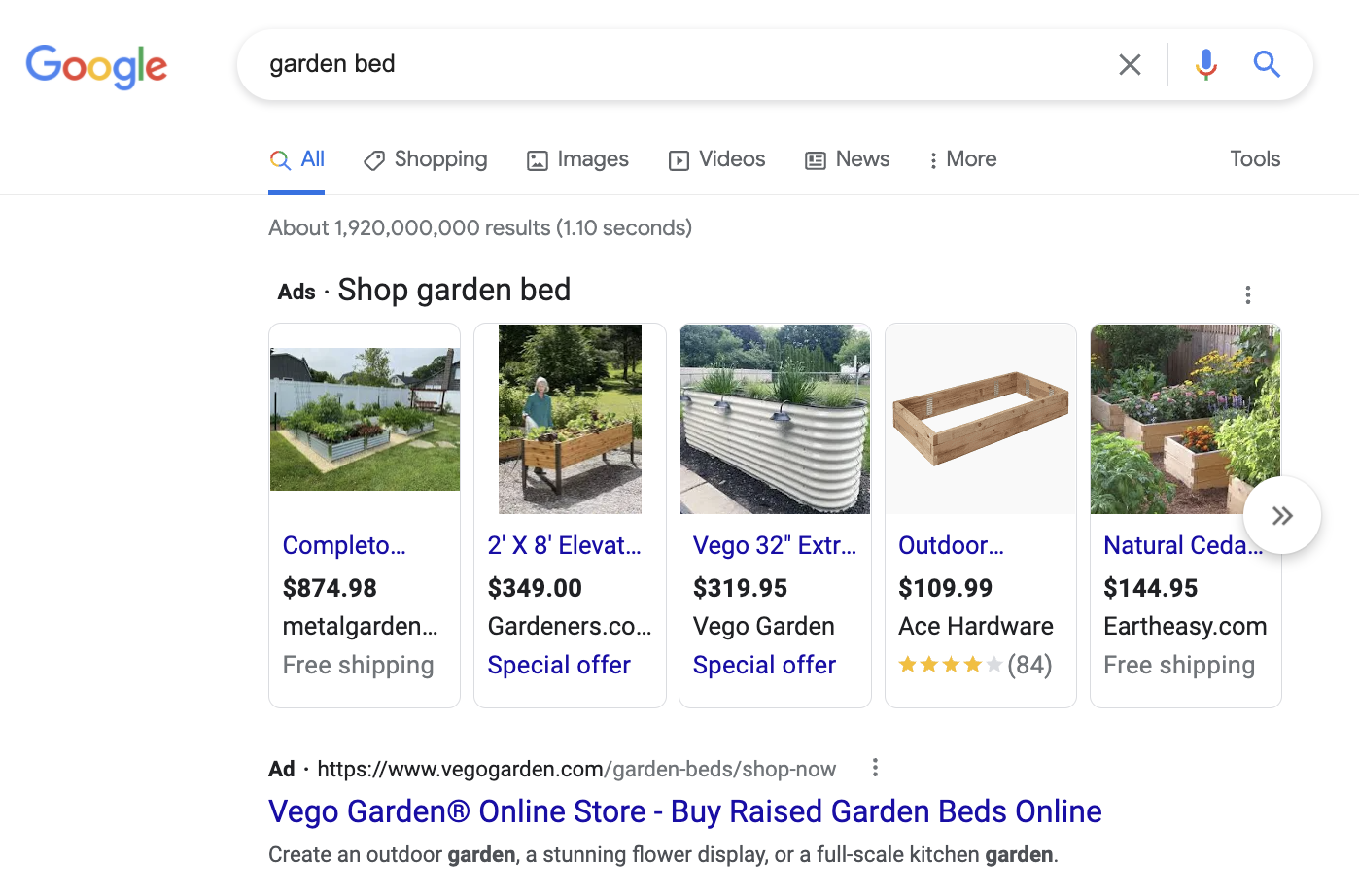
A half-hour or less of this basic research can help you compile a dozen brand names, bloggers, and media outlets to start with.
Then, you can create a new detailed targeting audience on Facebook, and narrow your broader-interest audience down with these additional interests, building out a list of your closest persona matches.
Note: Not all brands will be available to target as interest audiences, but bigger brand names typically will be.
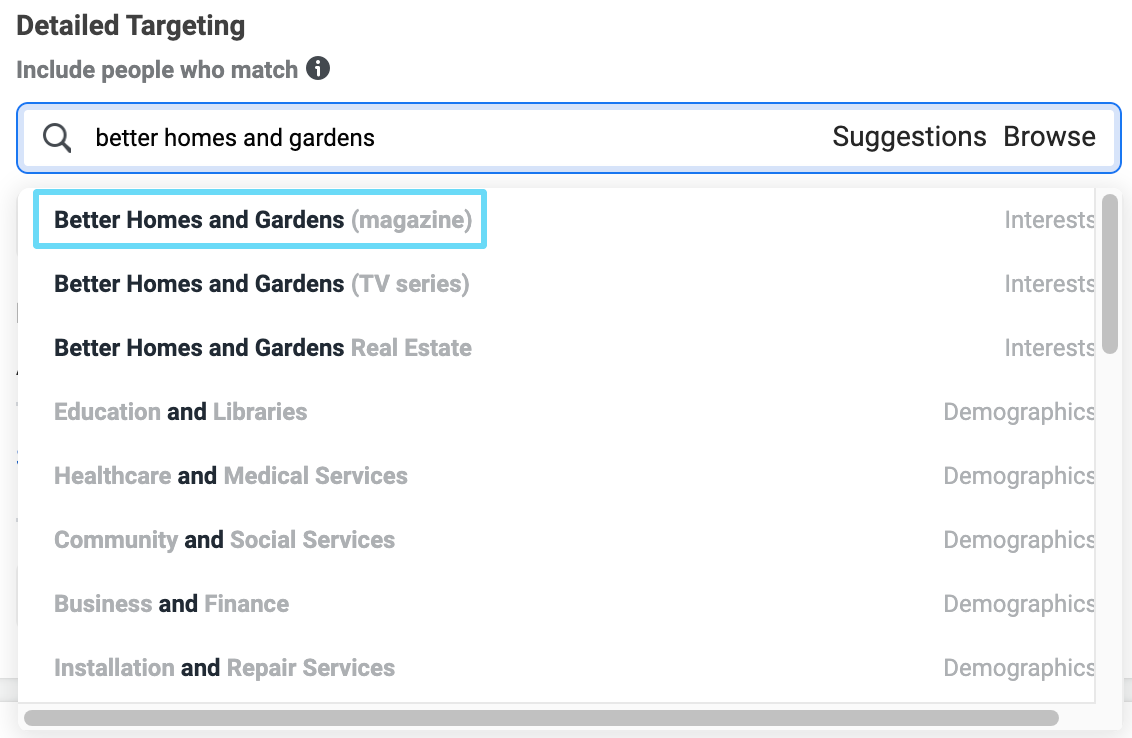
4. Get your existing customers to self-select
Selling to multiple personas is tricky. It can become really complex, really fast.
You’ll now need not one, but two (or more) interest-based audiences to hit each persona. Mixing personas and audiences up will tank results, otherwise.
One trick is to help people tell you exactly who they are. You see this a lot on pricing pages, when businesses name their pricing plans after the user persona that would need that plan.
For example, a lowest pricing tier can be categorized as “New business,” the middle pricing tier as “Growing business,” and the highest pricing tier as “Experienced business.”
You can gather data about a person based on what plan they select, what pages they view, or even what posts they click on, so that you can reverse-engineer which specific persona “buckets” they fall into.
Admittedly, this is a little more complex. But you can test this in small doses with organic posts, first.
For example, you can publish different content types that might be of interest to each persona. Then, you can sit back and watch what happens.
In the end, you’re simply looking for clues for where you should start and which topics resonate most. That way, you’ll know exactly what to do when it comes time to decide on creative direction and ad objectives.
5. Fine-tune your interest audiences sizes
Brand awareness campaigns need to hit a sweet spot with audience size in your ad set.
If they’re too big, you’re going to waste money advertising to uninterested people, or you’re going to blow through your budget too fast.
If your audience is too small, however, it’ll never get off the ground, and you’ll never reach enough people to make a dent in sales down the road.
The solution is to start with a number of people of around 1 - 2 million. If that sounds high, remember that larger audiences result in lower costs-per-thousand impressions (CPMs).
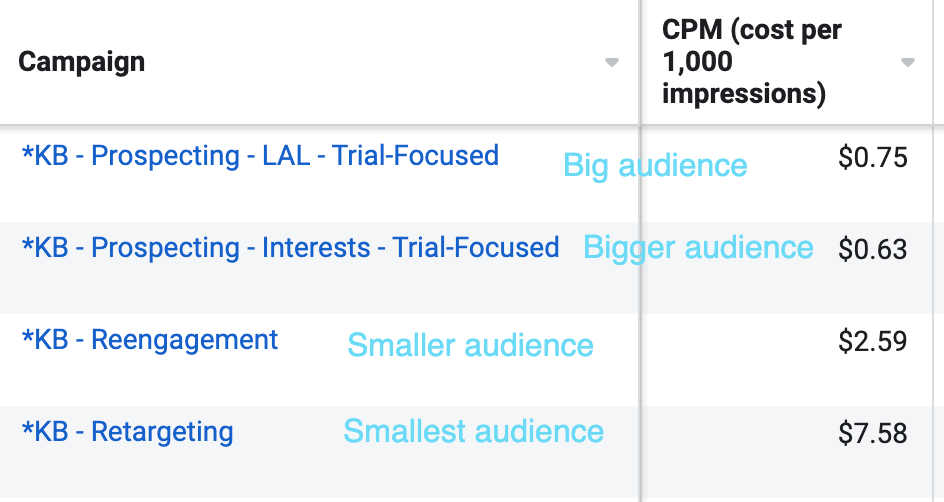
In the beginning, you’ll need to keep adding interests and brand names to build up that list over a million. But once your list size peaks, you'll want to start reducing the number to the ideal size by adding audience exclusions.
Let’s go back to our example from a few minutes ago.
We want to reach young homeowning gardeners, but only the ones who are actually home to do their gardening.
We can add audience exclusions to remove anyone who’s currently away from their hometown:
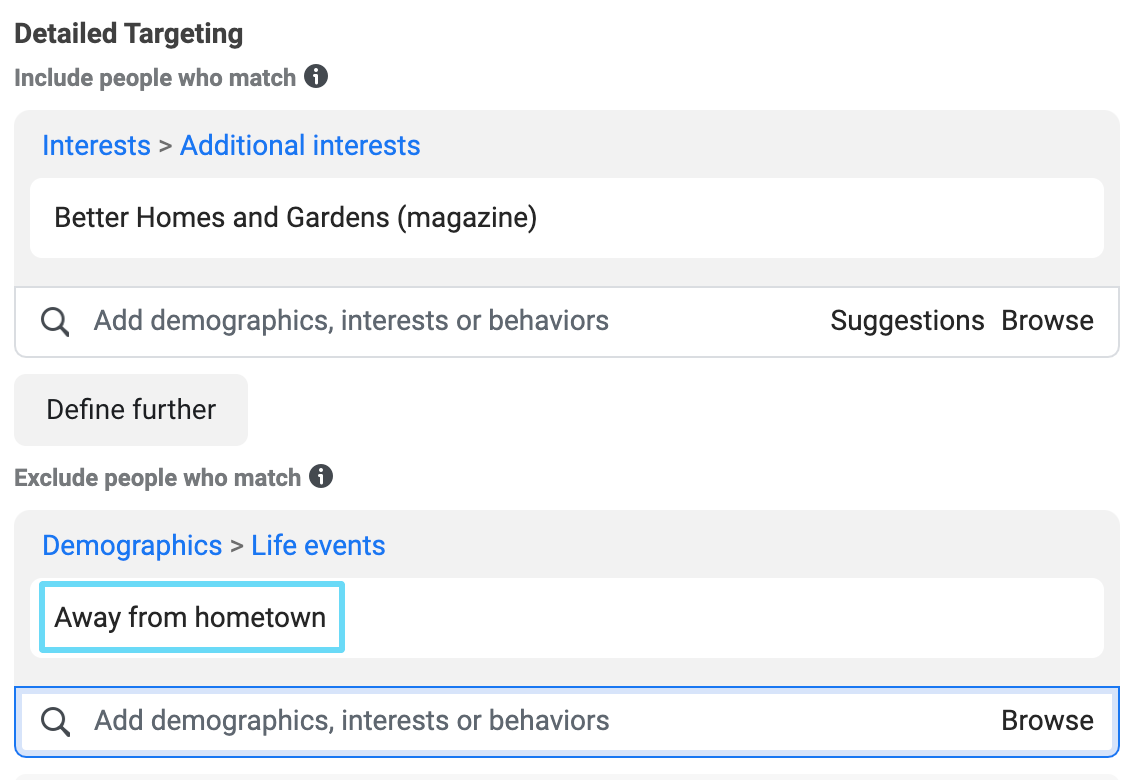
Continue narrowing this audience by defining your audience further with more interests or adding more exclusions to hit that sweet spot.
You might need to repeat this process several times if you’re going after multiple personas, or if you’re going to test similar audiences against each other (which you should).
6. Go big to be shared wide
Now, it’s time to talk creative.
Under Armour’s “Rule Yourself” campaign with Michael Phelps became one of the most shared ads ever weeks after it debuted during the 2016 Summer Olympics.
Just one year’s Olympics generate over $1+ billion in ad spend. That eclipses the amount spent during each year’s Super Bowl.
So, there’s a ton of competition. Every brand imaginable is going after the ~4 billion eyeballs watching around the world.
The interesting part about this ad was that it featured Under Armour products sparingly, and they weren’t the primary focus of the message.
The only goal of this ad was to resonate emotionally with their customer personas.
Viewers who watched this Michael Phelps ad told AdWeek that they felt “inspired,” “amazed,” and “prideful.”
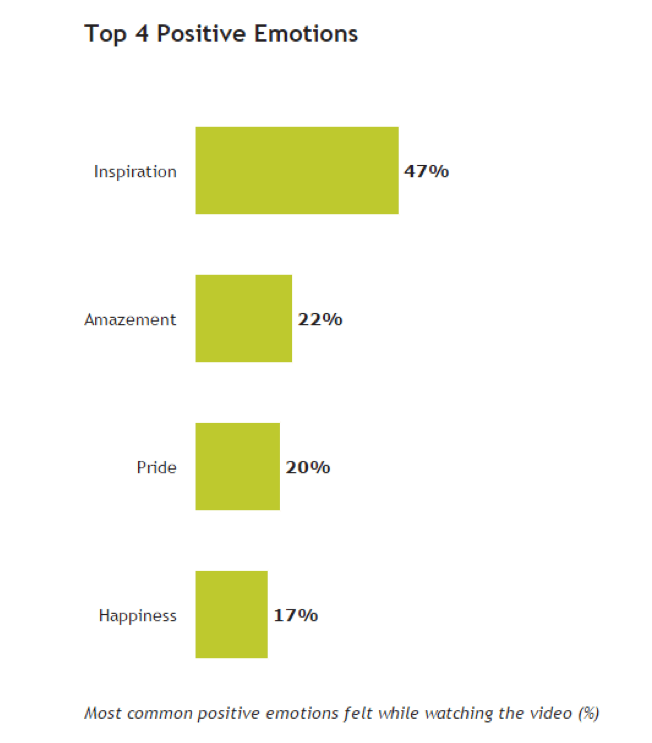
Obviously, the size, scale, and scope of this Under Armour campaign are off the charts.
The good news is that you don’t need to go anywhere near it to get many of the same benefits.
Remember: Facebook awareness campaigns don’t sell a single thing. Your custom audiences will do that down the road. Instead, your goal here is to reach as many people as possible so that your custom audience fills up to the brim.
If your ads emotionally resonate, they’ll stand a better chance at getting shared or remembered–especially Facebook video ads. (Video is the high-engagement medium of choice these days, let’s not forget.)
Your fans will do the distribution for you, so you can come back to target their friends later on.
7. Use the problem, agitate, solution (PAS) strategy
Big, emotional campaigns won’t always work.
You might still need a powerful, built-in motivator that you can use for dry, technical sales, too.
People in technical industries still have problems. And when you boil it all down, those problems usually end up hurting them financially.
Whatever the case, most B2B customers have an inherent motivation that you can leverage. That’s where the classic copywriting formula, PAS, comes into play.
Here’s a perfect example from HubSpot:
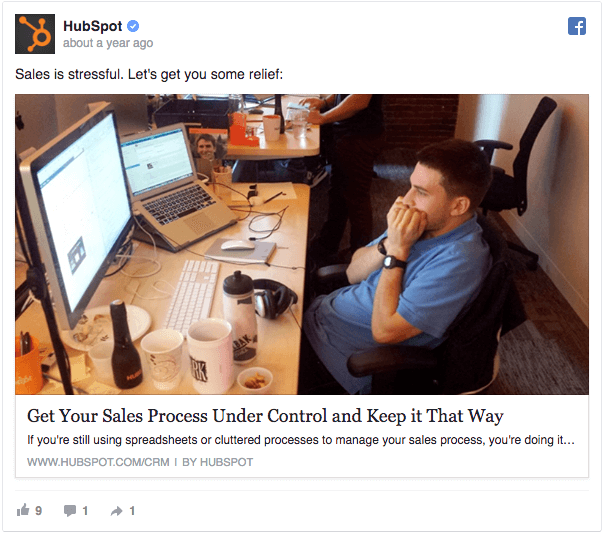
The problem is that sales can be stressful.
They agitate the problem by mentioning how spreadsheets can only make the problem worse.
The solution is what you get when you click on their ad.
Once again, the ad doesn’t focus on the tool itself. That would be more appropriate for a middle or bottom of the funnel customer.
Instead, they focus intently on the problem and finding a solution for it.
They get you to resonate with that first because that’s what top-of-funnel audiences care about most.
Your solution might not be something they want to buy right now, but anyone who’s done sales can empathize with the guy in this ad. And when they’re ready to pick a solution down the line, they’re going to remember one thing: that you understood what they were going through before you tried to sell them anything.
8. Use branded content to leverage influencers
Do you know how many customers trust influencer messages more than a brand?
That means if people aren’t getting their product or brand introductions through an image ad, it’s likely coming from an influencer.
Beam Coffee, for example, uses its many influencer relationships to spread the word about its products.
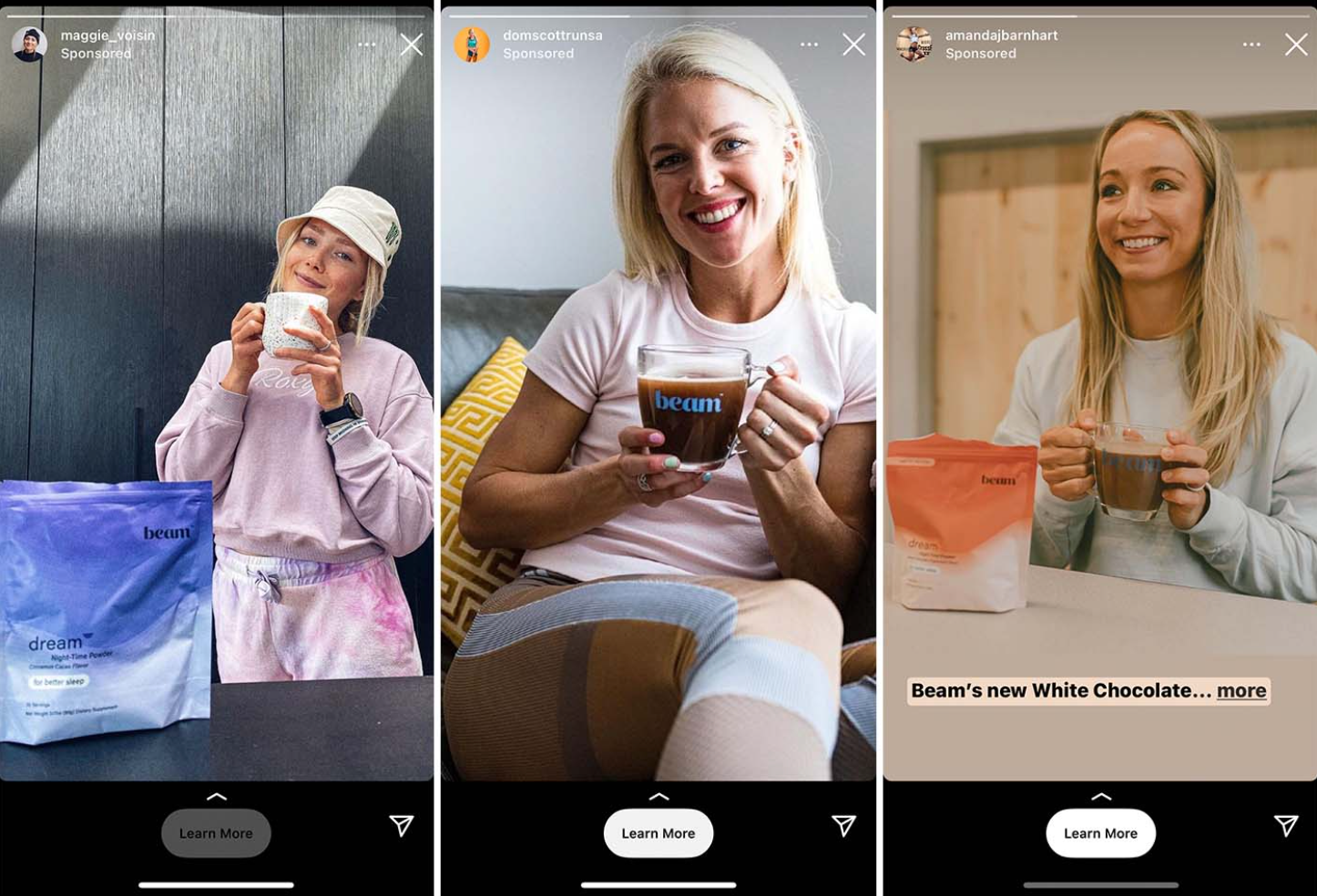
But traditional influencer relationships can be tough to measure.
Facebook’s introduction of the Branded Content ad type gives you a platform to help get in front of new audiences while adding to your credibility through paid partnerships. Because it’s an ad unit, you get transparent metrics on all interactions in Facebook ad manager, so you know exactly what you’re getting for the money spent.
You’ll just need to add your brand partners to your branded content after acquiring your Paid Partnership Label, and you should be good to go.
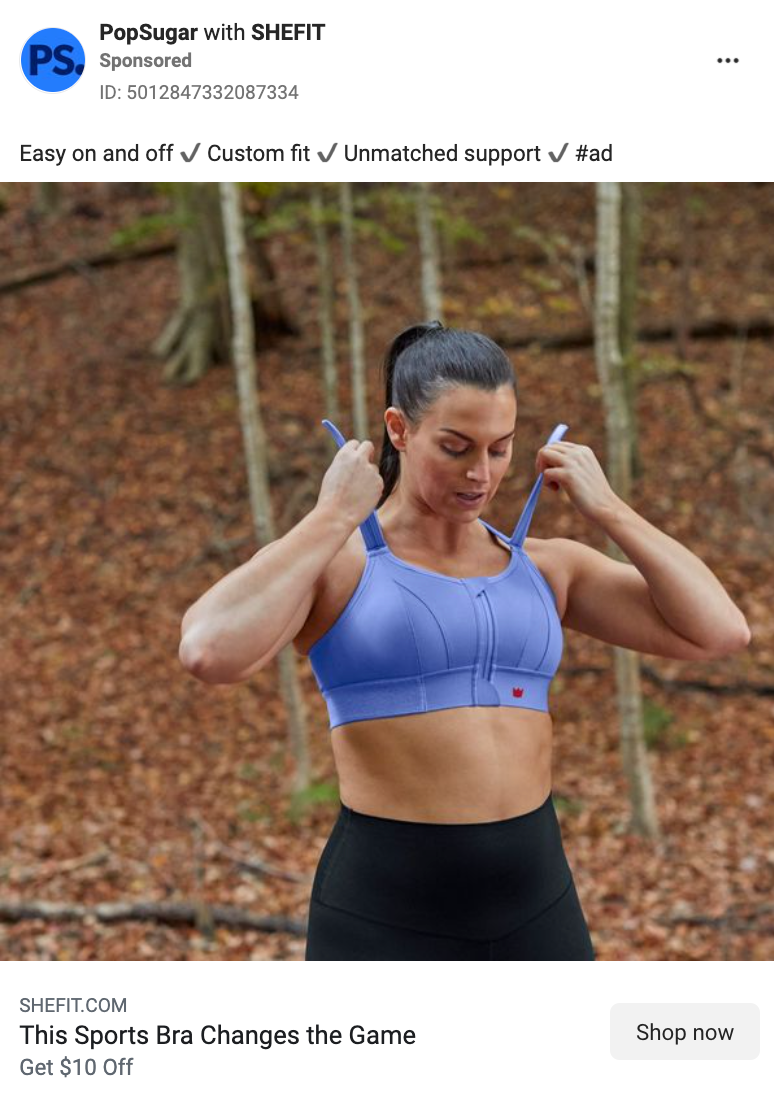
You can run the same exact ad creative here, but leverage the influencer’s partnership to your benefit.
Or better yet, use a platform like ShortStack to create specific contests or giveaways for each influencer’s audience to drive extra engagement.
9. Event sponsorships
I have a trick question for you:
What’s the best way to reach out to one of your buyer personas?
You don’t. Instead, you get their friends to do it for you.
That’s why branded content in the last section works so well. You incentivize the people who do know you to help share that message far and wide to friends who also match your buyer personas.
In marketing-speak, your initial paid impressions and reach are amplifying. You’re getting organic (AKA free) impressions and reach on top of the paid spend when you do it right.
To help further drive Facebook engagement offline, think about event sponsorships. You’re paying for access to a huge audience of people who share the same interests, and you can take it so much further.
Take this example from Culmination Brewing. They’re sponsoring a partnership event on Facebook with a new pop-up food vendor to help drive more awareness traffic, which benefits both partners:

Why are we talking about offline events?
Because people need around a dozen ‘touches’ with a brand before they buy anything.
You can’t just run a one-and-done Facebook brand awareness ad campaign and call it a day. You need to follow up multiple times with different messaging and different ways to engage, to eventually create that lead or sales opportunity.
You can create all kinds of event-specific Facebook brand awareness ads using urgency to transform someone’s interest in this event to a “buy your product” mentality.
10. Reach people for less with mobile ads
Your goal isn’t to advertise anywhere and everywhere. You want to make the most of your money by advertising in the places that make the most sense for your brand.
For example, if high-priced, low-engagement desktop ads are a concern, you can exploit mobile ads and right-column Facebook ads instead.
More people browse the internet on their mobile phones than on desktop devices.
And where’s the majority of that time spent? 84% of it is in apps like Facebook.
That makes Facebook the perfect place to grab the attention of people who are browsing for a few minutes. Here’s what AdEspresso co-founder and CEO, Massimo, says about consumer behavior on mobile:
“Mobile users tend to ‘Like’ a lot. Users will discover your product on their phones… then buy it the next day on their desktop.”
Go for the click and click-through-rate (CTR) at this stage, not the sale.
Your space is limited and time is short. Use creative that leverages this small, on-the-go placement.
11. Interactive brand awareness with Facebook’s Instant Experience
A regular newsfeed ad is static. You can drop in a nice image, but otherwise, there’s not a lot of room to work, and not a lot of opportunities to fully capture interest.
Instant Experience ads (formerly Canvas ads) are a totally different ad type.
They’re high-quality interactive ad units that allow you to showcase all kinds of media, from videos to GPS data. Users can scroll through them, pan left and right in them, and click links within them.
Plus, they load about 15x faster than a typical mobile site–and we all know that loading speed wins the race with people’s short attention spans these days.
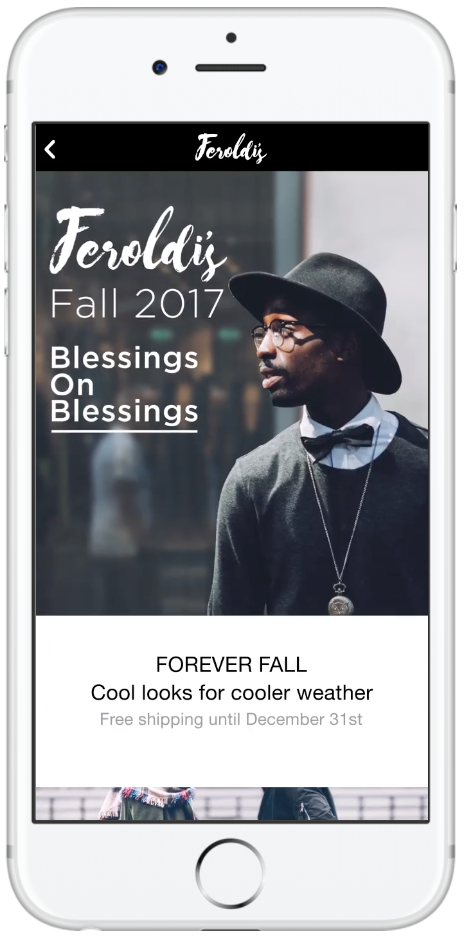
Big brands have been using this interactive ad type for everything from product lookbooks to storytelling.
In other words, it’s a content-play to introduce new people to your brand. Its full-screen interactivity on mobile also gets people to stop and interact with the ad for a while.
12. Right-column Facebook Ads
Facebook’s right-hand column ads also don’t get much love.
However, they’re excellent if someone has already interacted with your brand at least once and can recognize you.
For example, you can use colors, fonts, and design patterns to be instantly recognizable. Check out this ad example from Osmosis, which uses their mascot for instant recognition in a small format:

However, there is one thing to consider.
Right-hand column ads are much smaller than desktop placements. Using any text runs the risk of it being too small to read.
So, don’t try to “sell” in this ad placement. You especially don’t want to try and fit any small disclaimers or CTAs into the image.
These ads are perfect if they’re mostly image-based. That’s especially true if someone already recognizes your branding or offer – (or if you lead with one compelling message). That’s what Sumo does here with their social proof:
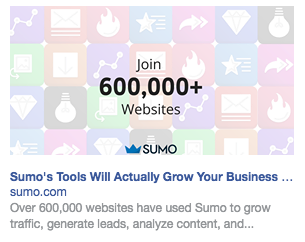
13. Use America’s favorite word: “Free”
“Free” is about as close to a magic word as you can get.
It’s the gateway to a response, and it lowers the entry barrier for new leads so that you can earn their trust.
But the key to “free” is that it has to be used as a way to offer something of real value and validity that supports your core offer.
The perfect free value proposition is a bit of a moving target. In the beginning, it can be anything from free content to lead magnets:
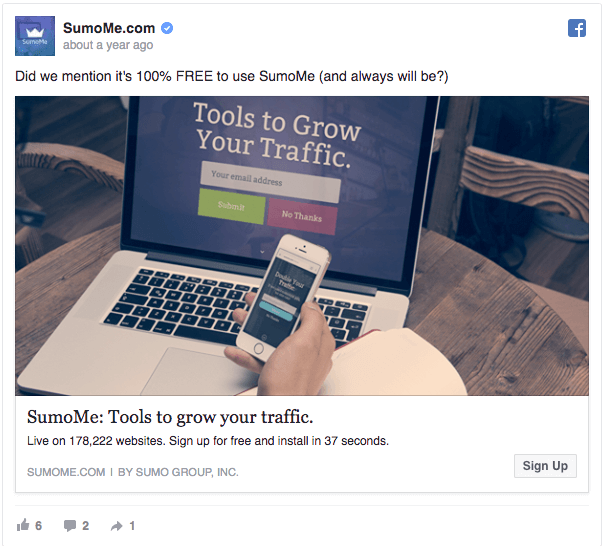
Once again, SumoMe leverages social proof and “100% Free” to grab your attention. If you’re at all interested in growing traffic, there’s no way you’re passing this one up.
The same applies to something like offering a free webinar or something time-based. Setting it out a few weeks from now will only make everyone who signs up forget about it.
Instead, keep the deadline shorter to drive the urgency to show up.
Some brand awareness campaigns can really do well using free offers to capture leads and interest. Typically even “free” content or services are gated, meaning users have to at least hand over their email and name or create a sign-in to access it.
This provides a little extra value to your brand awareness campaigns.
Sure, you might not be selling anything, but you’re giving people things to remember your brand by, and you’re collecting little tidbits of their information, which can be useful for something like an email marketing campaign.
Ready to build brand awareness campaigns that win?
You have to raise the bar for how people see you, where they see you, and how they interact with your brand in order to increase brand awareness and build a better strategy. Better brand awareness objectives lead to better bottom-of-funnel opportunities down the road, which means more money for you. 🤑
You’re now the brand awareness expert. You know why brand awareness is essential, and how to elevate your marketing strategy to pinpoint your ideal customer personas.
Now all you need to do is put that knowledge to work.
If you’re already on top of your brand awareness game, and you’re ready to start working your lower-funnel strategies, check out our next post on using Facebook lead ads to supercharge your conversions.